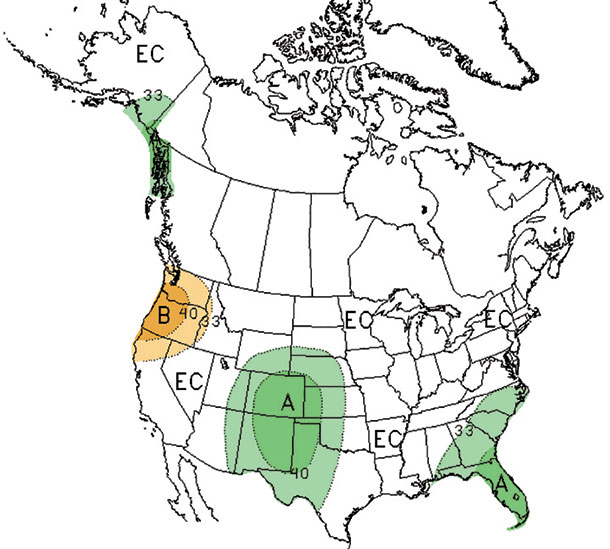In nursing calves, ADG is reduced by about 4.3 percent on average or about 0.09 pound per day. The economic treatment level for horn flies is estimated at 250 flies per animal.
Control strategies may include topical insecticides, feed additives, pasture rotation, special traps or something else. Topical insecticides will be the focus of this month’s column.
 Numerous application methods can be used to apply topical insecticides. These include eartags, pour-ons, sprays, rubs, dust bags and a gel cap applicator. When using topical insecticides, it is important to rotate chemical classes each year (pyrethroids, organophosphates and macrocyclic lactones) to help manage horn fly resistance. Below is a list of common active ingredients in each class.
Numerous application methods can be used to apply topical insecticides. These include eartags, pour-ons, sprays, rubs, dust bags and a gel cap applicator. When using topical insecticides, it is important to rotate chemical classes each year (pyrethroids, organophosphates and macrocyclic lactones) to help manage horn fly resistance. Below is a list of common active ingredients in each class.
When selecting topical insecticides, it is actually easier to look at the active ingredient before looking at the brand name. This is because numerous products contain the same active ingredient. There are over 10 products labeled for pour-on use that all contain permethrin.
- Pyrethroids: cyfluthrin, permethrin, zeta-cypermethrin, lambda-cyhalothrin, and gamma-cyhalothrin
- Organophosphates: coumaphos, phosmet, diazinon, chlorpyrifos and pirimiphos-methyl
- Macrocyclic lactones: abamectin, pour-on dewormers would also fall in this class.
If insecticide eartags are used, they should be applied on the front side of the ear toward the bottom. This will allow for maximum transfer of the insecticide from the tag to the back, side and belly of the animal, where horn flies are most often found. Eartags will provide longer control than other topical applications.
Additionally, using two eartags will provide longer control than using just one tag; this can be especially valuable in situations where gathering cattle is labor-intensive.
One advantage of pour-ons, sprays and the gel cap applicator is: They are easier to apply than eartags. Length of control will generally be one to two weeks, depending on weather conditions. Rubs and dust bags are only effective if cattle will use them; in open pastures, this can be challenging. When using rubs, never mix the insecticide with diesel; diesel can be absorbed into the animal, creating residue concerns. Mineral oil and vegetable oil are safe alternatives. ![]()

-
Jason Banta
- Associate Professor and Extension Beef Cattle Specialist
- Texas A&M University
- Email Jason Banta










